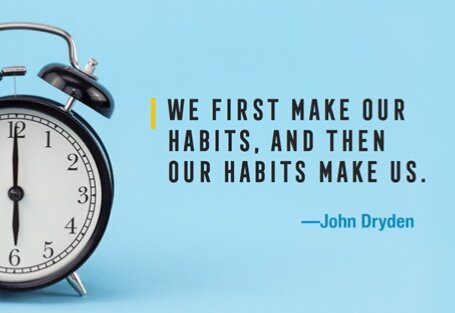”CUE” illustration by www.ved5tiden.dk
The most successful global leaders in fighting coronavirus have communicated clearly, displayed empathy and always favored science over politics. When challenges arise we don't rise to the occasion, we sink to the level of our training. We have to recognize that things are not going to back to what they were before the coronavirus. The pre-COVID world was all about performance, agility and efficiency, the post-COVID world will be all about one thing - survival. Does your organisation have a plan for how we get people back to work? Are you ready to tackle the challenges ahead?
Health and safety of the workforce should be management’s top priority and managing employee numbers will be critical to protecting workplace health, as the higher the number the higher the risk. Have you thought about the benefits of a staggered reintroduction, e.g. rotating who works from the office and who works at home?
”ROUTINE” illustration by www.ved5tiden.dk
Once open, how can you keep your employees safe? There will be more questions than answers, for example:
- What will be the new physical setup?
- How much distance should there be between desks?
- Have you made restrictions on your office building capacity?
- What about employee gatherings around the coffee machine?
- What about the cafeteria and lunchtime procedures?
- Have you developed new office sanitization protocols?
- Will there be guidelines for wearing personal protective equipment, e.g. face masks and/or gloves?
- What are the rules for checking employees who are returning to work after illness?
- Will your employees need help to manage this mindset change?
- How will you deal with employees who are reluctant to return to the office?
- Do you have a Crisis Management team to deal with ethics and compliance complaints?
Would you like to have a training plan for implementing new operational procedures, processes and policies during your “back to workplace” transition and beyond?
Contact us on sb@peakbalance.dk to hear more on how we can help your organisation.
“REWARD” illustration by www.ved5tiden.dk







